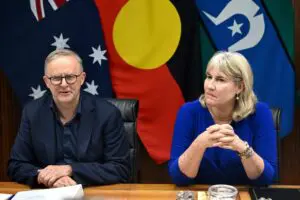Amongst all the cost-of-living reliefs, fuel concessions, and benefits to home buyers that were delivered in last week’s federal budget, there was notable silence on one significant aspect, transition to renewable energy.
Though we have a Net-Zero by 2050 target, it is safe to say Australia is dragging its feet extremely slowly towards that goal.
The minor investments in microgrids mentioned during the Budget speech is unlikely to provide major support to put us on the right path.
This is quite ironic, considering we are the world leaders in per capita rooftop solar power generation with one of the highest penetrations of wind and solar energy of any continental scale grid in the world. This is largely due to the strong policies from the late 2000’s through to 2013 when the Gillard government’s carbon price was repealed.
But so far we have seen no significant governmental support massive energy transition that is under way around the world and urgently needed in Australia.
If we hope to accelerate towards Net-Zero by 2050 we need to be well on track to a 50 per cent reduction of greenhouse gas emissions by 2035, or earlier. The most important actions the government can take right now is to ensure investment in electricity grid transformation and its market policy support.
The most powerful action the government can take is a mix of funding and de-risking of the $30-$40 billion of new transmission infrastructure over the next 10-15 years to set us up for the 2050 Net Zero goal as modelled by AEMO’s (Australian Energy Market Operator) 2022 step change scenario.
To support this investment what we also need parallely is rapid and significant reform of the National Electricity Market (NEM) governance frameworks and investment in urgent world leading research to help manage a near 100 per cent renewable grid.
If we can lead the world on silicon PV technology what can’t why not for grid technology as well?
We are already feeling the impacts of this lack of adequate support.
The AEMO in 2021 said we do not have the tools to operate the NEM securely by 2025 as grids have never been operated with so much low cost renewable generation anywhere else across the globe.
Unfortunately for Australia, we cannot ‘buy’ solutions to these problems or look to other countries for support because the world has yet to encounter such conundrums.
With the CSIRO and the nation’s universities leading the charge, we need to develop homegrown solutions for our unique energy transition issues.
It is astounding that though our clock is running out, there is currently no nationally agreed policy-making framework to guide us through a once in a century technological transition (the incumbent fossil dominated utility sectors’ energy sector’s Kodak moment) that has been precipitated by the climate emergency.
The only clear solution for policy coordination is the creation of a new national energy regulator with policy making powers to replace and improve upon the effectively defunct COAG Ministerial Energy Council.
The first task of this body would be to harmonise policy across the nation that includes effective and unambiguous powers for the key energy market bodies such as the AEMO, Australian Energy Market Commission and the Australian Energy Regulator.
The above grid transformation will need to quickly dovetail into a radical transformation of our transport sector (which produces over 20% of national greenhouse gas emissions) by investment in transport electrification to move fully away from fossil fuels by 2035 at the latest.
This will help reduce emissions over the 1.5° trajectory and increase energy security. Particularly significant considering recent challenges around oil and gas prices and supply caused this time by the Russia-Ukraine conflict.
The time is right for making significant strides forward towards our 1.5 degree goals. Australia’s lack of concern has already been noticed by the world. It is best that we do not get told off twice.
Professor Ariel Liebman is director of the Monash Energy Institute.










